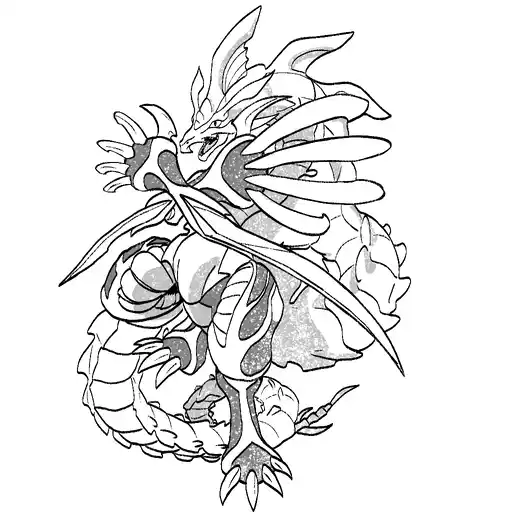- Introduction: The Intersection of Literature and Digital Art
- Background and Context: Young-ha Kim and the Rise of Webtoons
- Main Insights: Adapting “The Origin of Life” and “Christmas Carol” into Webtoons
- Challenges and Opportunities: Bridging Literature and Digital Media
- Future Outlook: The Evolution of Storytelling
- Conclusion: Celebrating the Fusion of Tradition and Innovation
Introduction: The Intersection of Literature and Digital Art
Korean literature has long captivated readers worldwide with its deep emotional narratives and cultural richness. Recently, the fusion of traditional storytelling with digital art has opened up fascinating new avenues, particularly through webtoons. The latest adaptation of Young-ha Kim’s short stories into webtoon format exemplifies this trend, drawing fresh attention to his celebrated work. Young-ha Kim, a luminary in Korean literature, has seen his stories “The Origin of Life” and “Christmas Carol” reimagined into webtoons, breathing new life into these narratives. This article explores the significance of these adaptations, how they preserve the essence of the original works while bringing modern flair, and what this means for the future of literature in the digital age.
Background and Context: Young-ha Kim and the Rise of Webtoons
Young-ha Kim: A Literary Icon
Young-ha Kim is one of Korea’s most esteemed writers, known for his ability to weave intricate tales that delve into the human psyche. His accolades and literary accolades speak volumes of his influence in Korean literature. His stories, often marked by psychological depth and cultural insights, resonate with readers both domestically and internationally.
The Advent of Webtoons
Webtoons, a distinct form of digital comics originating from South Korea, have revolutionized the way stories are consumed. Unlike traditional comics, webtoons are designed for vertical scrolling, making them ideal for mobile devices. This accessibility has contributed to their widespread popularity, with platforms like Naver WEBTOON leading the charge in bringing diverse stories to global audiences.
Main Insights: Adapting “The Origin of Life” and “Christmas Carol” into Webtoons
“The Origin of Life”: A Tale of Love Revisited
“The Origin of Life,” originally part of Kim’s collection “Two People Only,” explores themes of lost love and rediscovery. The story follows a man’s unexpected reunion with his first love, capturing the nuances of nostalgia and unresolved feelings. As a webtoon, this narrative gains new dimensions through visual storytelling, where emotions are depicted through expressive illustrations. Si, the emerging WEBTOON artist, employs a unique style that enhances the emotional depth of the characters, allowing readers to visually experience the protagonist’s journey.
“Christmas Carol”: A Psychological Drama Unfolds
First published in the collection “My Brother’s Back,” “Christmas Carol” is a gripping psychological drama centered around a murder case. The story’s tension and suspense are heightened through the webtoon format, where pacing and panel transitions play a crucial role in building anticipation. The adaptation adds layers to the original narrative, offering new perspectives and character development that were not present in the text. This reimagining invites readers to explore the complexities of the human mind and the intricacies of guilt and redemption.
The Role of Visual Storytelling
In both adaptations, the use of visual storytelling is paramount. Webtoons allow for a more immersive experience, where readers can engage with the story beyond words. The art style, color palette, and panel composition all contribute to the narrative’s tone and emotional impact. By marrying Young-ha Kim’s storytelling prowess with Si’s artistic vision, these webtoons offer a fresh take on beloved stories, making them accessible to a new generation of readers.
Challenges and Opportunities: Bridging Literature and Digital Media
Misconceptions About Webtoon Adaptations
One challenge in adapting literary works into webtoons is the misconception that the digital format dilutes the story’s depth. Critics argue that the brevity and visual nature of webtoons may oversimplify complex narratives. However, the success of adaptations like those of Young-ha Kim’s stories demonstrates that when executed thoughtfully, webtoons can enhance storytelling by adding visual layers and engaging readers in new ways.
Opportunities for Cultural Exchange
Webtoons also present opportunities for cultural exchange, allowing global audiences to access Korean literature and culture easily. By adapting stories with universal themes, such as love and psychological intrigue, webtoons can transcend cultural barriers and resonate with diverse audiences. This format not only preserves the essence of the original works but also introduces them to readers who might not have discovered them otherwise.
Future Outlook: The Evolution of Storytelling
The Growing Influence of Webtoons
As webtoons continue to gain popularity, their influence on storytelling is likely to expand. The format’s adaptability and accessibility make it an ideal medium for exploring diverse narratives and reaching wider audiences. We can expect more literary works to be reimagined as webtoons, providing fresh interpretations and innovative storytelling techniques.
The Role of Technology in Literature
Advancements in technology will further blur the lines between literature and digital media. As augmented reality and interactive storytelling tools develop, readers may experience stories in even more immersive ways. This evolution presents exciting possibilities for authors and artists to collaborate and push the boundaries of narrative art.
Conclusion: Celebrating the Fusion of Tradition and Innovation
The adaptation of Young-ha Kim’s stories into webtoons exemplifies the dynamic interplay between traditional literature and modern digital art. By embracing this fusion, authors and artists can reach new audiences and explore innovative storytelling methods. As webtoons continue to evolve, they offer a promising future for literature, where cultural heritage is celebrated and shared across the globe. For readers and creators alike, this is an exciting time to witness the transformation of storytelling in the digital age.





